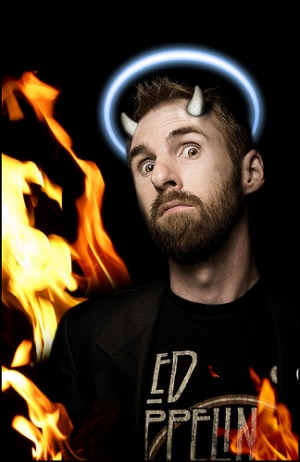Facebook’s Social Graph is a unique and powerful resource – and companies want to leverage it. A Like on Facebook provides an endorsement that can evangelize a product to new groups of followers and opens new channels of communication if they follow suit and like the product as well.
Please say you like me, then you'll find out why... No need to hesitate... Why don't you trust me? Just click that Like button.
Born on sleepy Vashon Island, Washington 45 years ago, K2 Ski Company has always been at the forefront of brand marketing innovation and engagement with its customers. Even 40 years ago, they were painting barns, issuing collectible employee trading cards and sponsoring Dick Barrymore directed films at the dawn of freestyle.
Much more recently, in a bold effort to engage its website users with Facebook, which some may prefer to call “Like-bait”, K2 temporarily shut down its website and provided one navigation option – to its Facebook page. The main attraction is an exclusive preview of K2’s new 2010 ski line on Facebook.
But here’s the catch, to access the preview, one must click the Facebook Like button and become a fan first.
So here is the question, is it ethical to make the “Like” button part of the site navigation? Or, is pretty much anything OK as the user can opt-out of clicking Like and skip the content, or click Like, view the content, and then click Unlike to return to the status quo?
[polldaddy poll=”3514443″]
Try this link if you do not see the poll embedded above.
Here is how the K2 Ski Company web site looks with its Facebook link:
The sole destination from the page is the K2 Skis Facebook page except for the customer service e-mail link.
Here the Facebook tab used as the landing page for the 2010 ski preview:
Since the Facebook page defaults to a special 2010-2011 tab promoting the new ski line, one would assume most people will follow the instructions and click Like to see the new skis, as opposed to selecting the Wall, Info, Photos or Video tabs.
Liking the K2 Facebook fan page not only provides K2 with a wealth of demographic information about the individual, it also provides them with access to that individual’s social graph, including the ability to present ads that may include a reference that the friend who clicked “Like” endorses the product. Friends see the specific Likes, but sponsors only see the information in aggregate.
Here is the preview page that allows K2 fans to check out the new Adventure, All-Mountain, Twin Tips and Youth ski lines:
It is not very compelling to state that somebody “Liked” getting access to a web page. It might be more compelling to state that the individual “Liked” the new ski line after actually seeing it, but that would require multiple clicks and not provide a guarantee of gaining a “Like” vote for every person entering the site.
It should be noted that it is a fairly simple process to Unlike K2 after viewing the skis. The unlike link option is not displayed on the preview pages, only at the bottom of the Wall and Info pages, as is the standard for Facebook.
K2 has always thrived on pushing the boundaries – is this simply clever marketing, or have they crossed the line?
K2 is not spamming, passing sensitive personal information to sponsors or click-jacking users to unintended sites, so how can this be considered evil? One may argue that they merely provided an incentive to become a fan. Or do tactics like this undermine the legitimacy of the Facebook Like button if other fan pages adopt similar strategies to up their fan count?
Would your opinion be different if a Like-bait approach was taken by a site that was not a well trusted market leader?
Add a comment after you vote to explain why you voted one way or the other.
